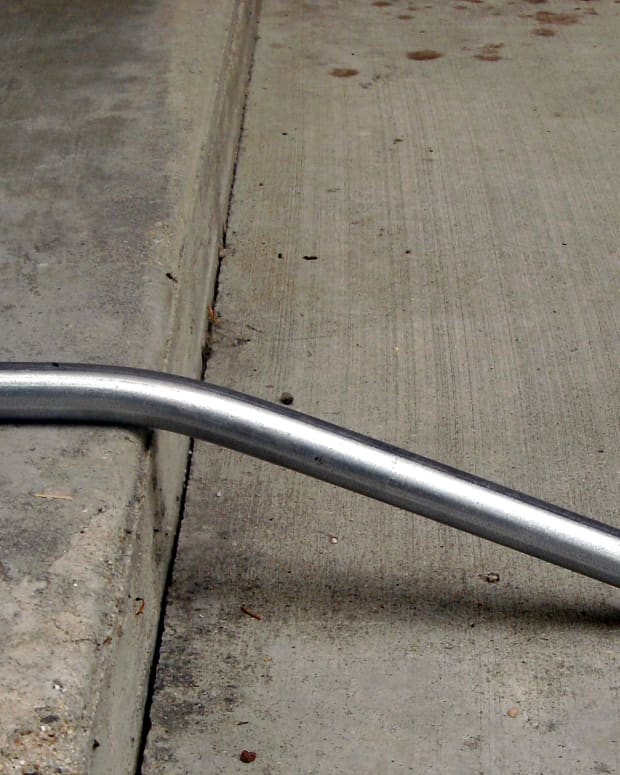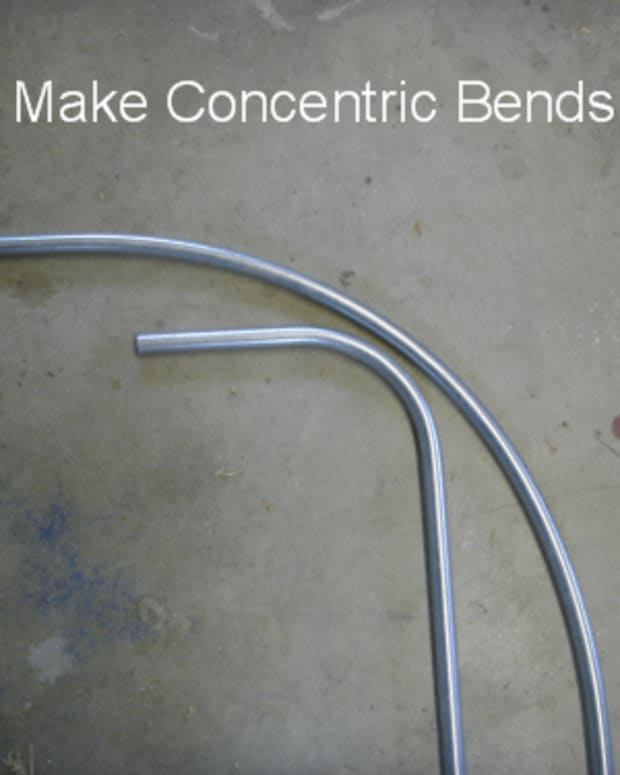
Formulas and Multipliers for Bending Conduit or Electrical Pipe
This is the amount of straight conduit required to make the bend. Example: To make a 90° bend with a 4" center line radius: Multiply the radius (4") by 1.57 for the Dev. Length (6.28). Divide by one less than the amount of bends, for example 9 - 1 = 8 spaces. Bend 10° at each line. Dev Length = 1.57 x 4" = 6.28".

Conduit Offset Multiplier Chart
How to Bend an Offset in Conduit. An offset is a bending technique that turns a straight conduit into a Z-shape, which allows it to avoid obstacles and change elevation. Calculate and mark where the conduit will be bent. Line up the bender's arrow (B) with the first mark and with the tube on the ground, make a 45° bend. Turn the bender upside.

Formulas and Multipliers for Bending Conduit or Electrical Pipe Dengarden
A simple way to determine the center line radius of a bend of a specific angle is calculate a full circle, then divide that number by 360 to find the measurement of one degree. Then, use this formula: π (2r) or πD π (pi) = 3.1416

Formulas and Multipliers For Bending Conduit or Electrical Pipe Dengarden
A Stub Up or "L" conduit bend is kind of bend that creates a vertical bend in conduit that is in an "L" shape. Decide the overall free end height you want once the bend is made Calculate the stub height by using the free end height and subtract the stub adjustment (from Bender Take Up Table below) 90 DEGREE STUB UP BEND - TAKE UP TABLE

Electrical Conduit Math Math Encounters Blog
Canva Math Used for Bending Conduit The math of conduit-bending that we will discuss here comes from two sources. Some of the math is already built into a common hand bender device, and the rest of it involves the geometry of a triangle. Note that making concentric bends requires using some additional math not discussed in this article.

Formulas and Multipliers for Bending Conduit or Electrical Pipe Dengarden
Multiplier (Cosecant) Method# Typically when bending conduit you decide the theta, and the hypotenuse (distance between bends) is the unknown value. In order to find these unknown values quickly by hand we'll use the multiplier method. This is the most common method to conduit bending. It uses the cosecant (1/sin) from the theta (bend).

Formulas and Multipliers for Bending Conduit or Electrical Pipe Dengarden
Multipliers for Conduit Offsets Math From Triangles The geometry of a triangle provides formulas useful for many conduit bends Most conduit bends, in addition to a simple 90-degree bend, can be understood and calculated using the geometry of a right triangle. Using a Triangle to Understand an Offset Offset | Source

Conduit Bending Cheat Sheet ubicaciondepersonas.cdmx.gob.mx
There are three basic bends that are commonly used: the 90° bend, the common offset, and the saddle. A more advanced type of bend called a concentric bend is discussed in a separate article. Each will be discussed separately, and you should make sure that each is understood and practiced before moving to the next section. Tools for Bending Conduit

Formulas and Multipliers for Bending Conduit or Electrical Pipe Dengarden
QuickBend is an advanced conduit bending calculator that was created to be fast and accurate while being visually appealing, innovative, and intuitive. Offering you the most accurate measurements using the center-line radius algorithm based upon the bender that you're using.

One of the more common bends made in electrical conduit is the offset
By multiplying the length of the conduit by the appropriate multiplier, electricians can accurately mark and bend the conduit to achieve the desired angle. Types of Multipliers. There are different types of multipliers used in conduit bending, including: Stub Multiplier: Used for bends with angles less than 10 degrees. 90-Degree Multiplier.

Episode 22 How To Bend Pipe/Conduit Guide To 90s, Offsets, Kicks
The stub bend is made by bending a piece of conduit into an L shape or 90° bend by placing the free end (short end) of the tube to a predetermined length as indicated in the diagram below. This is the most common bend and is a building block for other bends.

QuickBend Conduit Bending Apps 148Apps
Amazon Prime Student 6 month Free Trial: https://amzn.to/2J4txZw Amazon Audible Plus 30 day free trial: https://amzn.to/3sSYW4e Klein Tools 86225 Double Ho.

Math formulas and multipliers to help you bend electrical conduit
The multiplier is the number of the measured distance of the offset it is multiplied by to obtain the distance between the two bends. You should memorize this number for the common bends of 10, 22, 30, and 45 degrees.

Formulas and Multipliers For Bending Conduit or Electrical Pipe
Compression fittings. Unidelta compression fittings and saddle clamps are specially designed for joining polyethylene pipes with an outer diameter between 16 mm and 110 mm (200 mm for saddle clamps). They are suitable for joining polyethylene pipes, both high and low density, in drinking water distribution systems at pressures of up to 16bar.

EMT Conduit Bending Four Point Saddle Bend with Multipliers, Shrink
Using trigonometry to calculate conduit bending. Tue 25 September 2018. misc. The folks at Dengarden have a lot of conduit bending resources. If you're familiar with the way that conduit bending is usually taught, it's via shortcuts and rote memorization of how to do things like offsets, kicks, bends, etc. Suppose you studied trigonometry in.

Formulas and Multipliers for Bending Conduit or Electrical Pipe
Here we describe tools used to bend, connect, cut, or install electrical conduit made of metal or non-metallic materials, and we describe each of the EMT or electrical conduit bend types: the 90° Stub-Up bend, the back to back or "U" bend in conduit, the saddle bend to run conduit around any obstacle, the offset conduit bend to zig zag around an.